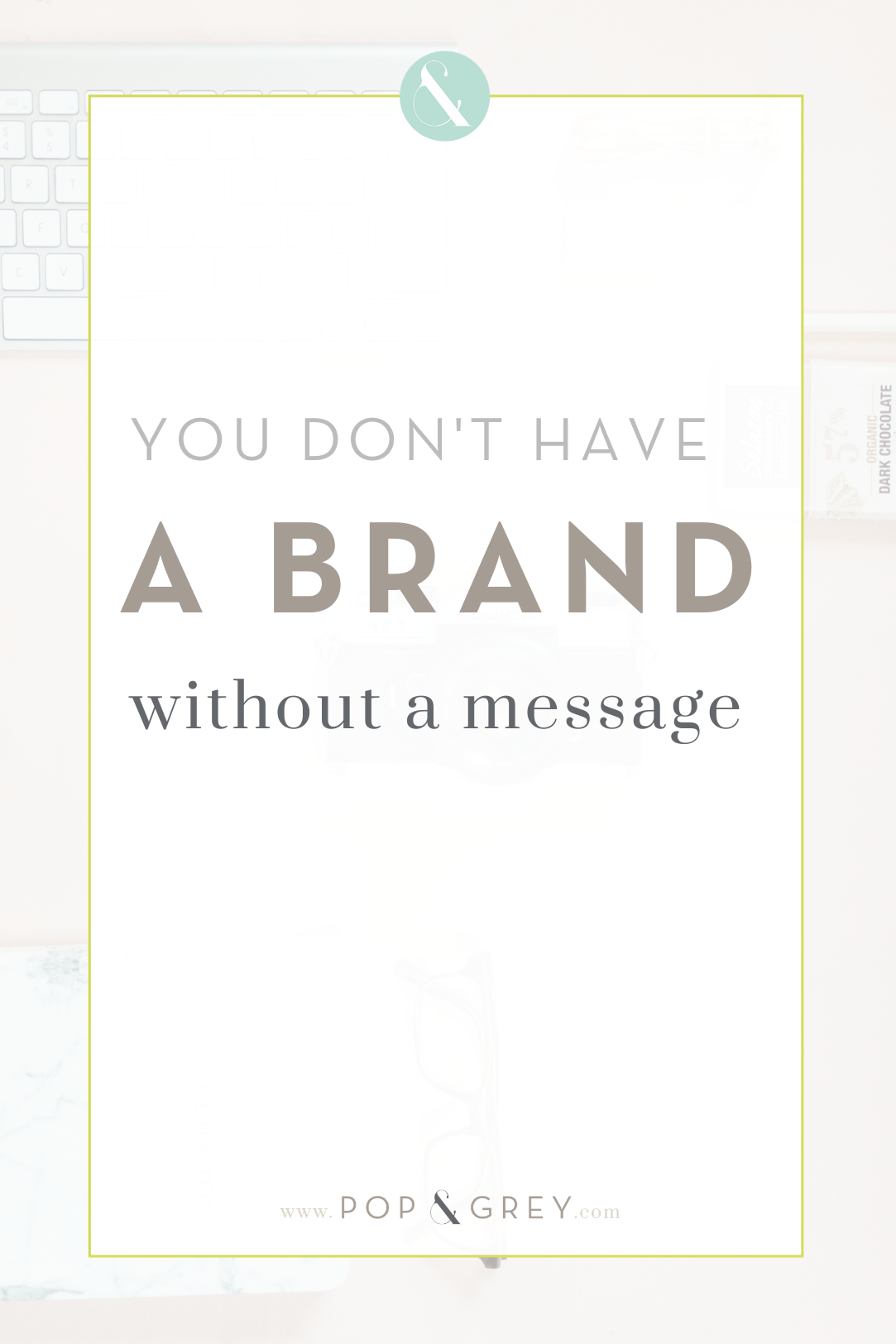
What the designer in me needs you to know but hates to say out loud is that you can have the most beautiful visuals in your industry, but you don’t have a brand without a message. I know, I know…the last person you thought would tell you that, right? Let me explain.
I love every minute of digging into the creative process of crafting the shiny deliverables that I have become known for. However, before we get to all of that we get super clear on your brand message and what voice will make it resonate most clearly. That is the secret sauce that truly dictates what kind of visuals you need. A powerful brand stems from having a clear message, positioning within your market, and a voice and visuals that use psychology to draw your ideal customer right to you.
This is why I started working in tandem with Deb Mitchell Writing last year to create a more robust brand strategy and messaging, as well as provide copywriting on the website projects that we are designing and launching. Working together through this process with our clients has been pure magic and has created workhorse brands that are effortlessly pulling the clients in. A beautiful brand and website is the icing on the cake, but it all begins with messaging, so let’s dig into how you can get yours ironed out.
What is Brand Messaging?
Your brand message is the ability to articulate what you do in a way that makes you stand out. All of my projects start with a hefty workbook and strategy session where we really dig into the meat of your business and are able to uncover the most important pieces. Your business probably stands for a lot of things and boiling it down to just one message is no easy task.
We start with crafting a positioning statement. Your positioning statement is the most clear-cut version of your message. It’s concise and gives people a snapshot of what you do and who you do it for, with just a sprinkle of your brand voice and what makes your business unique. Not only is this helpful to create your core message, but it will guide you when creating new services and products and keep you within the guardrails of where you want to be and who you want to serve.
So How Do You Form Your Brand Messaging?
The easiest way to determine your brand messaging is to start taking notes on the categories below:
- Your customer values
- What stresses them out
- Their fears
- What builds trust with them
- What emotions they need to feel to purchase
Combine all of this information with your positioning statement to inform your voice and visuals so that it’s woven into a cohesive brand. When you’re writing copy for your website, social media or anything else, you need to have that message in the back of your head so that you can reference it and make sure that everything you are saying is circling back to a consistent point.
Feel like you’re repeating yourself? Good. You should be. That means you are always coming back to a consistent foundation.
Once you have this message clear in your head, use it to create a story around your brand. Be personal, be vulnerable, and let those stories help you to engage with your audience.
How Do You Use Your Message to Create Your Voice?
Honing your voice takes time…and lots of practice. Your voice is a natural
extension of how you speak (especially if you have a more personal brand)
because that’s what makes your brand feel genuine and authentic. However, it also has to be more intentional than that. Your voice should incorporate specific words and sayings that trigger the emotions you want people to feel.
Remember how your mom used to always say “it’s not what you say, it’s how you say it?” Well, she was right. People are much more open to receiving the information you are giving them if you’re speaking directly to them and not a huge mass of faceless prospects.
Once you know how you serve people best and are in tune with the emotions they are feeling when searching for someone just like you, it’s easy to figure out how to talk to them. You wouldn’t speak to an intense, serious man with a corporate background the same way that you would a lighthearted, millennial woman planning a wedding, would you? This is where it can get scary because this voice will instantly draw in certain people and instantly repel others. But don’t worry, that’s your goal!
How Do You Allow Your Message to Influence Your Visuals?
For me, the visual piece always starts with psychology. You can’t design a
website that sells without a truly effective brand, and you can’t design an
an effective brand without a clear message. So once you have that message, you can dig into the fonts, colors, and style that can communicate the same thing in visual form. The easiest place to start is with color. You can grab my color psychology cheat sheet here to get you headed in the right direction. It will give you a jumping-off point if you find color matches with what emotions your customers need to feel to purchase. Once you are on the right track, you can start finding other colors, styles, and fonts that complement it, and you’ll be on your way.
The bottom line is that while creating your visual brand is the fun part that people love to do, honing your messaging and positioning first guarantees you’ll make more money from that investment. Everything flows from there to guide you on the right path.
A pretty brand is just that…pretty. But a brand that weaves messaging, voice and visuals is built on a solid foundation that is built to sell.


